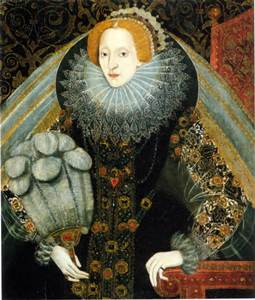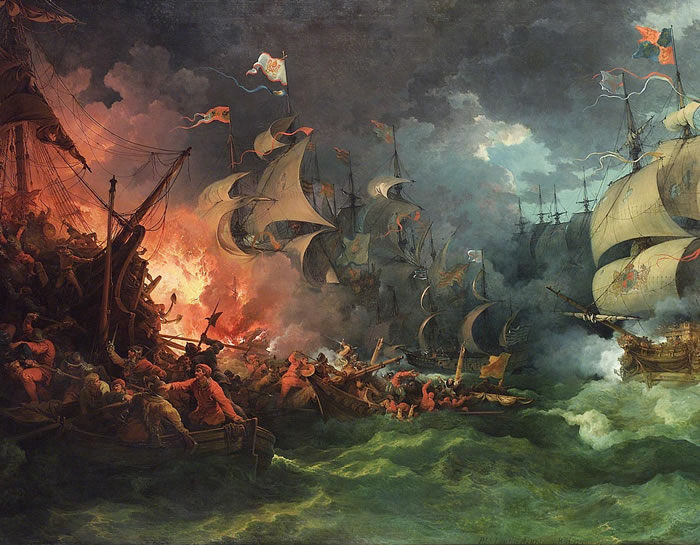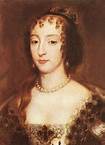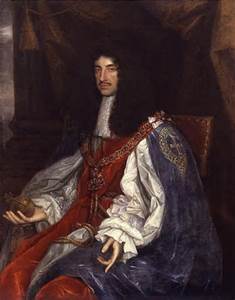
King James VI of Scotland and I of England
Trial and Execution of King Charles I
The English Civil War was far from just a disagreement of how the Kingdoms of England, Scotland and Ireland should be governed. The two sides of the kingdoms were split on religious differences that had been growing for over a hundred years and had caused conflict across Europe.
On the 24th of March 1603 Queen Elizabeth I of England and Ireland died and without any children of her own the throne was passed to her closest male relative, King James VI of Scotland (the son of Mary Queen of Scots). Elizabeth’s father, Henry VIII had begun the dissolution of the Catholic Church in England in order to marry Elizabeth’s mother, Anne Boleyn.
Henry VIII
Henry’s government passed many laws to change control of the church in England from the Pope in Rome to the King of England. Under his daughter Elizabeth’s reign, the protestant Church of England was firmly established and had been condemned as heresy by the Pope. Throughout Europe many Christians had already began to have their own ideas about Christianity and the teachings of the scriptures. They wanted more freedom from the control of Rome and many created their own protestant churches much to the condemnation from Rome and Catholics.
Elizabeth had survived many attempts to overthrow her mainly by Catholics that wanted to end the Protestant Church in England.
Mary Queen of Scots
Mary was Catholic and had many supporters to her claim for the throne of England and who disliked Elizabeth who established the Protestant Church of England, but many Protestants in Scotland also distrusted Mary. Mary began a relationship with her advisor, the Earl of Bothwell and when her husband, Lord Darnley, died suspiciously in 1567 Mary was blamed. Just three months after the death of her husband and father of her child, James, she married Bothwell turning the Scottish nobility against her. On the 24th of July 1567 Mary was forced to abdicate and imprisoned, leaving her son James to be crowned King of Scotland aged just one. Mary escaped Prison and amassed an army to help her return to the Scottish throne once more. On the 13th of May 1568 Mary’s forces faced the forces of the Scottish Nobles at Langside. Mary was defeated and fled to the safety of England seeking refuge with her aunt Elizabeth I. After Mary became involved in various plots by Spanish and English Catholics to overthrow Queen Elizabeth, Mary was placed under arrest. In 1586 another foiled plot directly started by Mary she was tried and convicted of treason. Mary was executed on the 8th of February 1587.
Queen Elizabeth I

Queen Elizabeth had been supporting Dutch Protestants in the Spanish controlled Netherlands. Elizabeth’s brother-in-law, Catholic King Phillip II of Spain (through his marriage to Elizabeth’s sister Mary) amassed the largest naval fleet the world had ever seen called the Spanish Armada. The fleet of 130 ships set sail for England on the 19th of May 1588 and was tasked with conquering England.
Elizabeth was a great public speaker and addressed her people about the impending battle, ‘I know I have the body of a weak, feeble woman; but I have the heart and stomach of a king - and of a King of England too’ she proclaimed.
The Spanish Armada
On the 21st of July 1588 the mighty Spanish fleet, which made a seven mile long line of ships, was within range of the smaller English Naval fleet. By the 28th of July that year the English naval fleet of just 34 ships led by Sir Francis Drake had defeated the Spanish Armada.

James I of England and VI of Scotland
When Queen Elizabeth I died and James VI became King of England. King James VI of Scotland was known as King James I of England and he wanted to be known as King of a united state of the two Kingdoms. He put it to Scottish and English MP’s to come up with a way of uniting the two parliaments but they were unsuccessful. In October 1604 he decreed that in future he should be known as King of Great Britain. He gave orders for a new flag that incorporated both the Saint George’s cross and the cross of Saint Andrew.
The different realms were very different and ruling them as a unified kingdom would prove very difficult. Ireland was a predominantly Catholic country, while Scotland was mainly Calvinist Protestants. Calvinists believe that the word of god was infallible and encouraged others to interpret the bible as they saw fit. They felt that no-one should impose their own interpretation on another and their leaders would openly discuss the meanings with their parishioners. Catholics would follow the teachings of the Pope believing him to be god’s representative on Earth, being able to make laws that god would also hold true in heaven. Protestants in England had more religious freedom than that of Catholics but were still under their King as head of the church.
James I was raised in Scotland by the Protestant nobles and he himself ruled as a protestant King. Catholics in England were opposed to the Protestant King especially when, in an attempt to unite his people under one religion, King James passed a law which taxed people that didn’t attend Protestant services.
The Gunpowder Plot
On the 20th of May 1604 at the Duck and Drake pub in London a group of Catholics, Robert Catesby, Thomas Winter, John Wright, Thomas Percy and Guy Fawkes met. Catesby proposed a plan to assassinate the new king by blowing up the House of Lords when King James opened Parliament. Their plan (the gunpowder plot) was eventually set for the 5th of November 1605. But the night before Guy Fawkes was found in the basement of the House of Lords along with several barrels of gunpowder. The plot was foiled and James survived.
The Thirty Years War
In 1618 the “Thirty Years War” (1618-1648) began in Europe which was initially a war between Catholic and Protestant nations. James didn’t want to get involved but was forced into it when his daughter and son-in-law (Frederick V of Bohemia) were attacked.
On the 27th of March 1625 James I of the United Kingdoms died and his son Charles I became King aged 25.
Henrietta Maria of France

On the 13th of June 1625 Charles Married a Catholic, Henrietta Maria of France which became a contributing factor in the belief of a royal plot to return the country to Catholicism. Added to this was the fact that he withdrew his forces from the Thirty Years War thus not supporting the Protestants of Europe.
This union brought more religious tolerance for Catholics in Britain and this led many Puritans (Protestant Christians with strict religious beliefs) to flee for Ireland, New England, the West Indies and the Netherlands (with about 20,000 migrating to each destination between 1630 and 1640).
Charles I of England
Charles I initially took a strong stance against the Catholic forces of the war but his momentum dwindled, gradually distancing Britain and Ireland from the conflict and by 1630 he had left the war. As a King he had a strong belief in his divine right to rule and believed he had no need for a parliament. In 1629 Charles disbanded Parliament with no intention of recalling it and his attempt to levy taxes without parliamentary consent made him many enemies within his own parliament.
Charles further alienated his people when he attempted to Anglicanise the Church of Scotland in 1639. He attempted to impose bishops on their church instead of their own church elders making their church more answerable to the crown.
In 1640 parliament reconvened and Puritans within parliament attempted to pass policies to reform the church. This alarmed many Catholics and on the 23rd of October 1641 till May the following year the Irish rebellion took place. The predominantly Catholic populous rose up in anger, killing several thousand Protestants that had settled there. They demanded more religious freedom for Catholics.
As Charles and Parliament debated how to deal with the situation it became apparent that no compromise could be met. The country was split and for once Charles seemed to be gaining supporters in England.
On the 4th of January 1642 Charles, entered the houses of Parliament in order to arrest five members for treason. The MPs were Mr Holles, Mr Pym, Sir A Haslerig, Mr Hampden and Mr William Strode all of whom had fled the house upon the Kings Arrival.
The English Civil War
On the 22nd of August 1642 Civil War broke out in England with predominantly the North and West supporting the King (“Cavaliers”) while the South and East including London supported Parliament (the “Roundheads”) led by Oliver Cromwell. By the middle of 1643 the Royalists were gaining ground and it looked like the Parliamentarians’ would loose. But the Parliamentarians’ made a military alliance with the Scots who sent troops to deafeat Royalists in the north and a year later Cromwell’s “New Model Army” defeated the Cavaliers at Naseby, Northamptonshire on the 14th of June 1645.
Charles I headed for Scotland and handed himself in, hoping for better treatment than he would receive in England but the Scottish handed him over to the English Parliament.
The Trial and Exicution of King Charles I
King Charles was tried for treason and found guilty on the 30th of January 1649. He was beheaded on the 6th of February 1649. On the same day, Scotland, Ireland and many royalists in England proclaimed Charles’s son, Charles II of England Scotland and Ireland. This proclamation was condemned as illegal by the English Parliament who declared the end of the monarchy making England a Republic for the first time in its history.
Oliver Cromwell
Oliver Cromwell became army commander and Lord Lieutenant of Ireland, crushing any resistance including the massacres of Wexford in October 1649 where he killed 2,000 soldiers and 1,500 civilians.
In 1651 Charles II, who was exiled on the death of his father, had been gathering support and an army in Scotland. On the 3rd of September 1651 Charles’s forces met with Cromwell’s army in battle.
Cromwell’s forces were triumphant and Charles fled for France. Cromwell proclaimed himself Lord High Protector of England in 1653 and began to establish Puritanism in England. He allied himself with France against Spain and at the Battle of Dunes on the 14th of June 1658 he defeated the Spanish forces.
On the 3rd of September 1658 Oliver Cromwell died and his son Richard became Lord High Protector of England.
Charles II of England

On the 25th of May 1660 Charles II returns to England by invitation and takes his place as King of England, Scotland and Ireland. The republic of England is over after 11 years in what is known as “The English Restoration”. He has all involved in his fathers death tried for regicide (Except the executioner who wore a mask keeping their identity secret).
On the 30th of January 1661 Cromwell’s body was exhumed and beheaded. His head was placed on a spike outside Westminster until 1685 as a warning.
